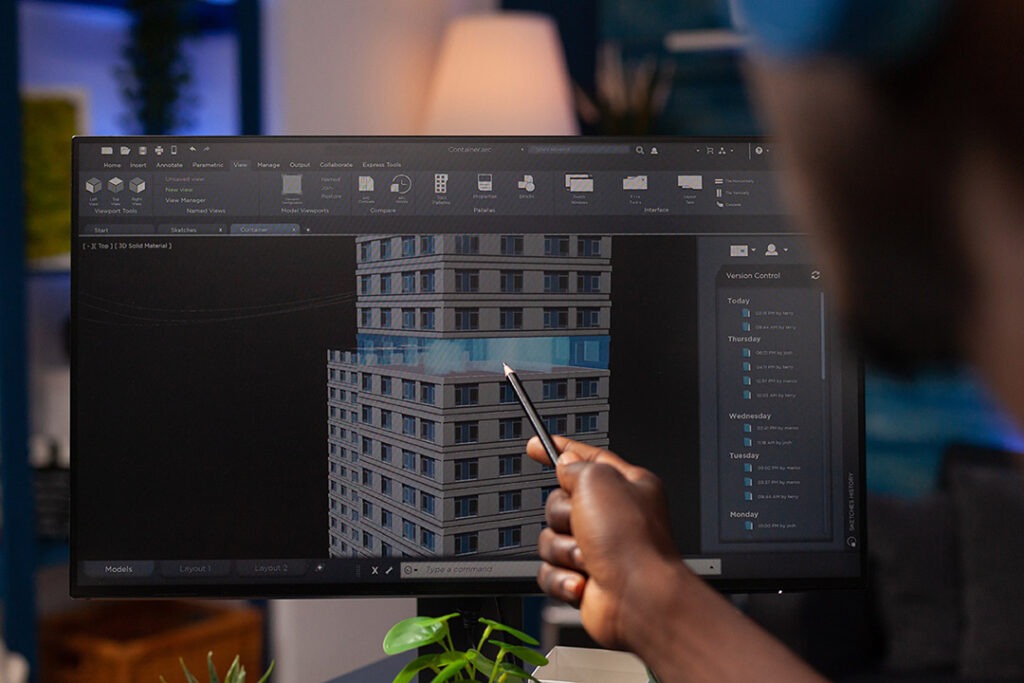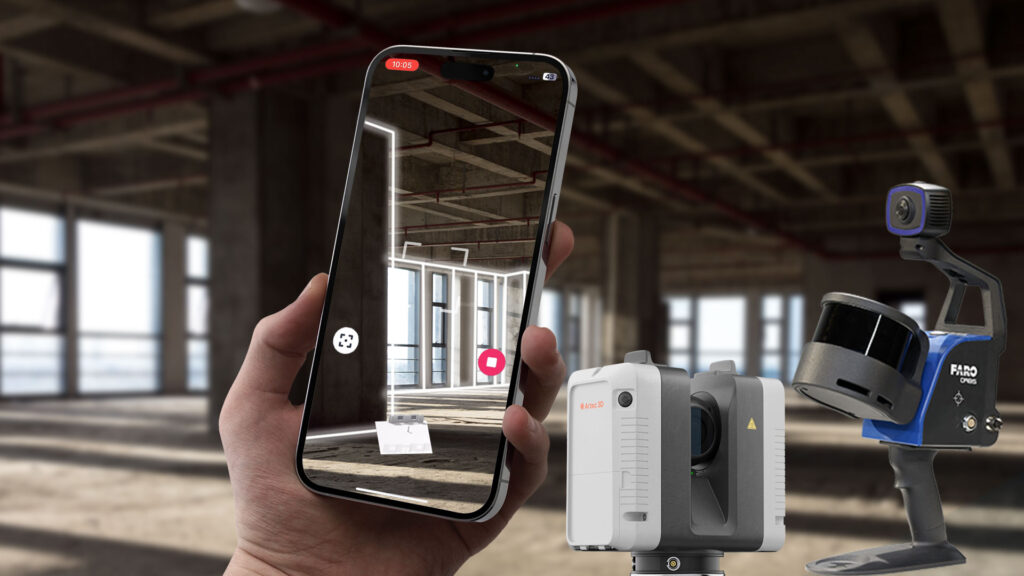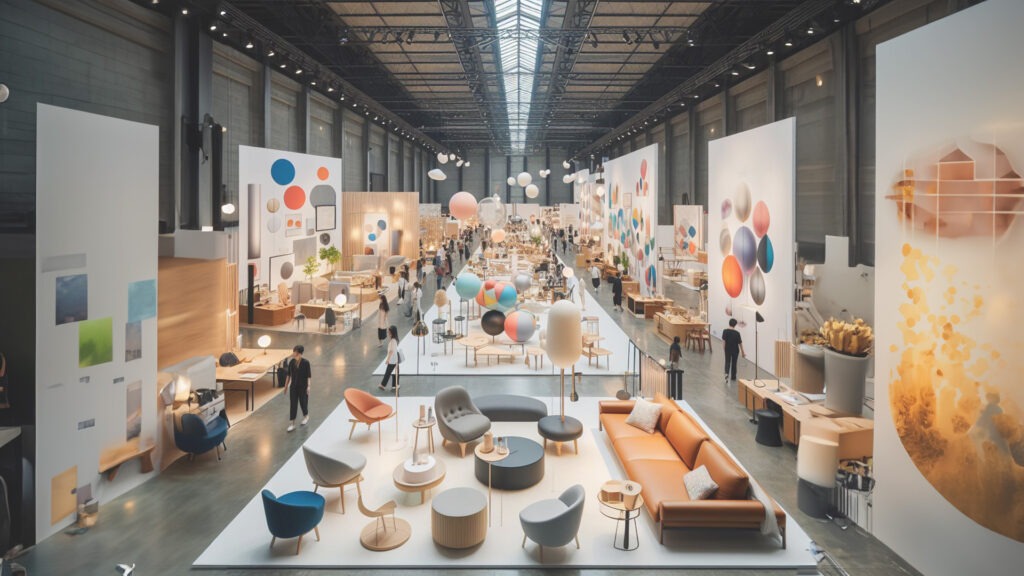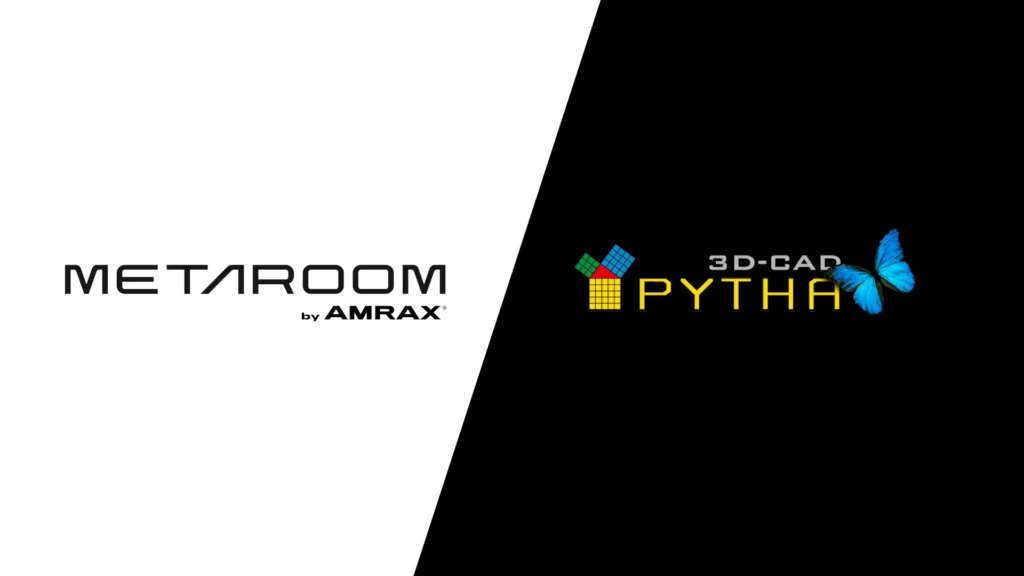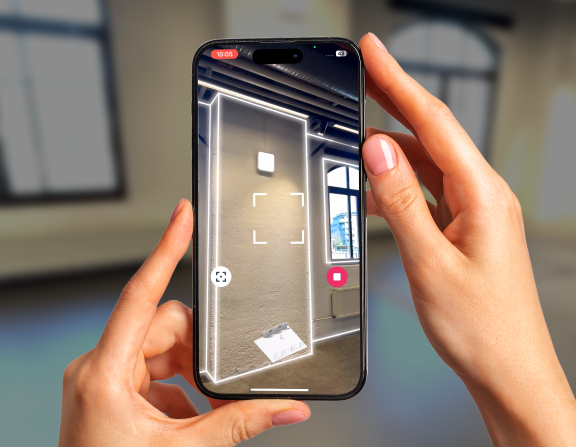As we approach 2024, integrating 3D modeling and artificial intelligence (AI) will redefine the landscape of Building Information Modelling (BIM). AI-driven solutions will set new standards in BIM-related areas such as facility management, lighting design, engineering and architecture. This article focuses on how these trends of 3D modeling and artificial intelligence can provide a competitive advantage over more traditional approaches. It offers practical insights and examples for professionals in the BIM sector, particularly in the operational and refurbishment phases.
1. AI-Enhanced BIM for Efficient Facility Management
In facility management, AI-integrated BIM is a game-changer. Artificial intelligence (AI) emerges as the next logical step in the evolution of facility management. By 2024, AI algorithms can mine BIM data to predict maintenance needs and optimize building operations. This shift from reactive to proactive maintenance will drastically reduce downtime and operational costs. It will provide a substantial competitive advantage.
BIM models already had a transformative effect on construction operations, moving project management processes to cloud environments. The integration of sensors and automation in operations management is further contributing to this transformation.
Example: A quality manager notes an incomplete flashing outside a window, as commonly done, AI algorithms analyze this data and automatically identify it as a potential water issue. This information is then highlighted for the superintendent’s review on a dashboard. This system is accessible to all users of the collaboration platform.
AI-Enhanced BIM Software for efficient Facility Management
AI supplements digital twins, such as the Nemetschek solution dTwin, by automating root-cause analysis and predicting maintenance needs using historical and real-time data. This streamlines operations and allows for remote inspections and lifecycle cost analysis, reducing costs and boosting efficiency.
2. 3D Modeling in Renovation and Retrofitting: Scan to BIM
3D scanning technologies allow for precise mapping of existing structures, making it easier to plan and execute. When combined with AI, these models can suggest the most efficient and cost-effective renovation strategies. This is a crucial advantage in the competitive AEC/O industry.
Example: In a historical building renovation, 3D scanning can be used to create an accurate model of the building. AI can analyze this 3d model and suggest the best methods for preserving original features. At the same time, the building can be upgraded for energy efficiency.
Software used in renovation and retrofitting
Scan with Metaroom and simulate with Autodesk Revit.
Autodesk Revit with its advanced BIM capabilities enables users to manage and store all project data in one place, facilitating better decision-making and planning for renovations. Simulate various renovation scenarios, helping to predict the outcomes of different renovation strategies.
3. Intelligent Lighting Design
AI and 3D technologies are transforming lighting design by enabling more personalized and energy-efficient solutions. AI algorithms can analyze 3D models of spaces and suggest lighting designs that optimize for both aesthetics and energy consumption.
Example: For a new office complex, AI can analyze 3D models to design a lighting system that adjusts automatically for natural light availability, enhancing energy efficiency and worker comfort.
Software used in Light Planning
ReluxDesktop with its advanced lighting simulations is based on 3D data and is known for its AI-driven simulations that help design energy-efficient lighting systems.
4. AI-Driven Optimization in Operational Phases
The parametric data available from Point Cloud to 3D model is a rich and accurate view of the building asset. This information allows architects, engineers, and designers to plan and modify building systems including electricity, HVAC and plumbing. The data storehouse also helps manage the building utilities and chart out preventive maintenance.
In the operational phase of buildings, AI-driven 3D models can play a pivotal role. These models can be used for space optimization, energy management, and ensuring compliance with safety regulations. AI can process data from various sensors within a building to provide real-time insights, allowing for more efficient building management.
Example: In retail spaces, AI-driven 3D models can optimize the layout for customer flow and product placement, using data from foot traffic and sales patterns. This can lead to increased sales and improved customer experiences.
Software for optimization in operational phases: Platforms like SIEMENS Building X and Honeywell Forge are instrumental in this optimization.
SIEMENS Building X utilizes AI on a cloud-enabled platform that accelerates sustainability, experience, and performance for future-proof buildings.
Honeywell Forge offers AI-driven solutions for optimizing space utilization and building operations.
5. Enhanced Collaboration in Renovation Projects
The greatest advantage of BIM Services is information transparency. Project collaborators can share the 3D model, with changes during any construction phase updated in real-time, stored in the cloud, and made accessible to all stakeholders through the model. This helps reduce miscommunication and conflicts. This streamlined workflow facilitates faster and more successful project completions. Cross-platform compatibility and seamless integration will be key to success in 2024.
Example: During the renovation of a multi-story apartment building, BIM services allow for real-time updates to the 3D model. This ensures that all contractors and designers are working with the most current information, reducing errors and delays.
BIM Software for seamless collaboration in renovation projects
Revit as a part of Autodesk’s BIM tools, it’s excellent for collaborative projects, offering real-time updates and cloud collaboration.
Bentley Systems’ SYNCHRO provides 4D construction modeling and project management, enhancing collaboration in renovation projects.
6. Predictive Analytics for Long-Term Building Health
AI’s predictive analytics applied to 3D building models can anticipate long-term building health and performance. This is crucial for facility managers and architects who are responsible for the upkeep and renovation of buildings, as it allows for more informed decision-making. This trend is particularly relevant in the context of green building practices and sustainability goals.
Example: AI predictive analytics applied to a 3D model of an aging bridge can forecast potential structural issues, allowing for preventive maintenance that avoids costly and disruptive repairs.
SAP Predictive Maintenance and Service uses AI to predict equipment failures and schedule maintenance in buildings.
Oracle Construction and Engineering offers predictive analytics tools for long-term building health and maintenance planning.
Conclusion
The AECO industry is on the doorstep of a digital transformation ready to address the critical challenges of urbanization, sustainability, and resource management, essential in the fight against climate change.
By 2024, emerging trends in 3D technology and AI will significantly enhance competitive advantages across facility management, BIM, lighting design, and architecture. These technologies not only enhance efficiency and sustainability but also open new avenues for innovation in the operational and renovation phases of building management. As we move forward, embracing these trends will be key for businesses looking to stay ahead in these industries.
Start creating your 3D Models for free. See how it works!
